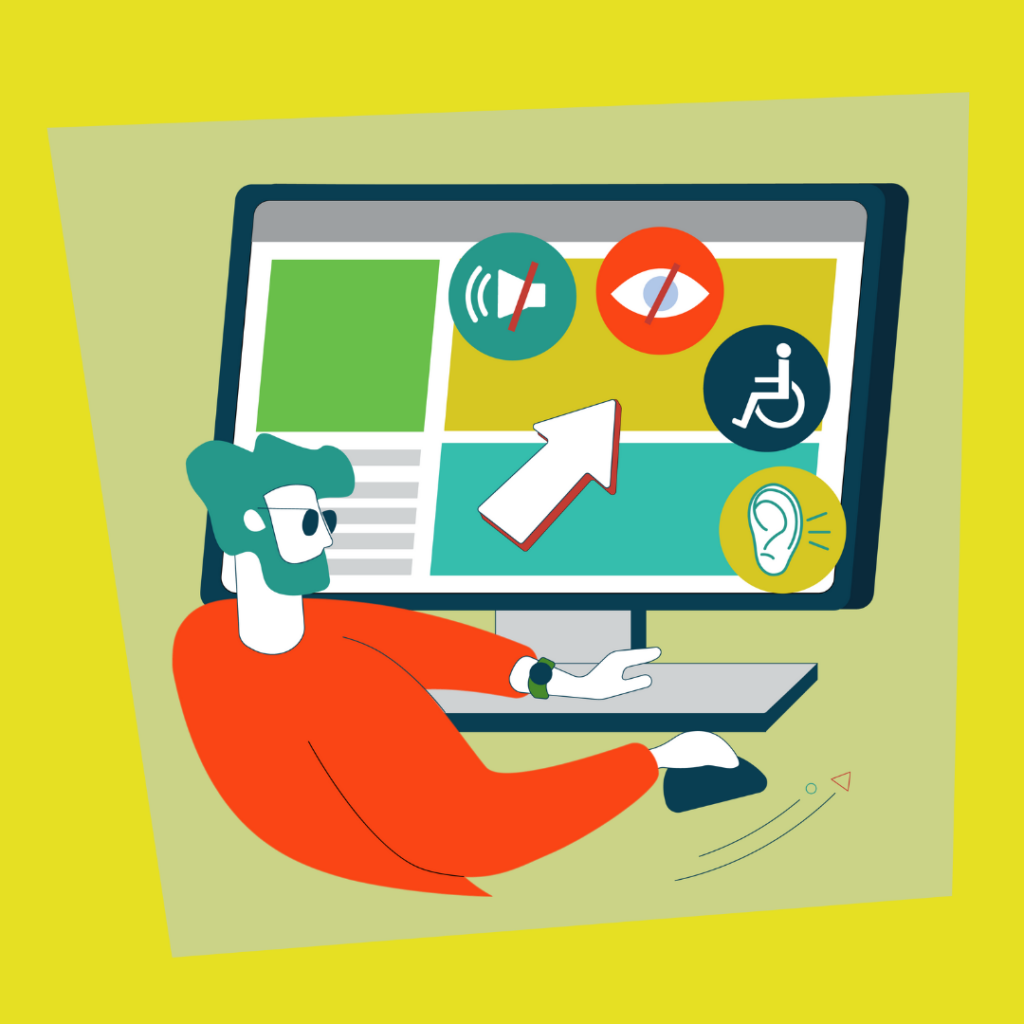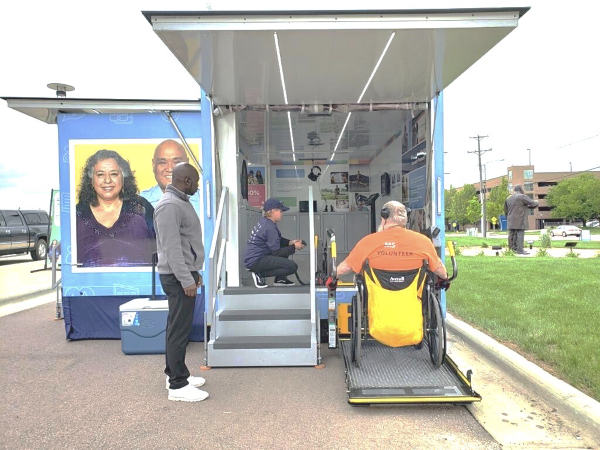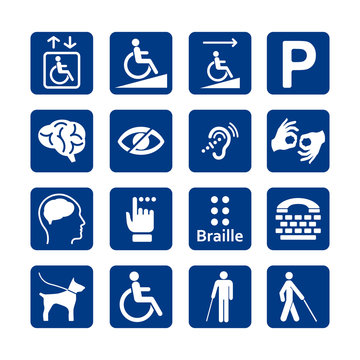
Today marks the 22nd anniversary of the Americans with Disabilities Act (ADA). Signed into law on July 26, 1990, the ADA “protects the rights of people with disabilities by eliminating barriers to their participation in many aspects of living and working in America.” It guarantees that people with disabilities have the same opportunities as everyone else to enjoy employment opportunities, purchase goods and services, and participate in state and local government programs.
As marketers who shepherd and support public and private sector clients, we share the legal and ethical responsibility of ensuring messages and experiences are accessible to all people. It’s not only the right thing to do – it’s good for business. In the U.S., the annual discretionary spending of people with disabilities exceeds $200 billion. Zoom out to the global level – in which the one billion people living with disabilities make up the world’s largest minority – and the estimate becomes nearly $7 trillion.
Fortunately, the ADA provides clear guidelines on how we can fulfill the promise of providing equal opportunities for people with disabilities. In this article, we break down some of the ADA’s guidelines. We also go further, sharing industry best practices as well as our own to expand awareness and promote accessibility and inclusion across marketing mediums.
Our Approach to Accessibility

Source: Section508.gov
Montage is committed to ensuring all people have equal access to the marketing communications, events, and experiences we produce. We think about accessibility from the earliest stages of our creative process and ask questions and carry out checks through each phase of development.
The simplest, most effective way we’ve found to make accessibility a core consideration in crafting marketing solutions is through the practice of universal design. Universal design is “the design of products and environments to be usable by all people, to the greatest extent possible, without the need for adaptation or specialized design.” While the concept originated in the fields of architecture and product design, universal design has expanded as a model for communications, media, and more.
By following the seven principles of universal design, accessibility becomes a foundational element of any idea, campaign, or creative product. And the practice allows us to create solutions that are better, fairer, and more inclusive for all people, regardless of their age, size, or ability.
Making marketing accessible for people with disabilities starts with universal design. But it doesn’t stop there. From in-person activities to digital media, here are some other specific ways you can support the ADA and make marketing accessible for people with disabilities.
Creating Accessible In-Person Experiences

The best-known requirements of the ADA apply to in-person settings. In many cases, they are things we see every day – think reserved parking spaces, ramps as an alternative to stairs, automatic doors, designated seating, and service animals. On the mobile exhibit we created for the All of Us Research Program, for example, visitors have access to the interior experience via stairs or an ADA-compliant electric wheelchair lift. Ample space is provided to ensure maneuverability and turning radius clearance. Specific exhibits are at eye and hand-level for people in wheelchairs. There is also an accessible restroom.
But just as disabilities are not always visible, so too are the accommodations required to make in-person activities accessible and inclusive. Within the All of Us Journey experience, we prioritize accessibility by presenting information through multiple formats. Information booklets are printed in English, Spanish, and braille. All digital screens and content include subtitles and audio clips. Printed graphics use large fonts and high color contrast, making them visible to the broadest possible audience.
These deliberate design choices meet ADA requirements, but they do so much more. By providing people multiple avenues for physical access as well as different ways to consume information, we maximize the experience for individuals with disabilities but also for those with varied learning styles, language preferences, and digital literacy skills.
TIP: Physical accommodations for people with disabilities are easier to remember because they are visible in our everyday life. But don’t forget about hidden disabilities such as autism, food allergies, and post-traumatic stress disorder when planning your marketing activities. In addition to following the legal guidelines, survey participants in advance to better understand their individual needs. Ask “How can we make this the best experience for you?” and think proactively how you can support them.
Here are eight essential steps for creating inclusive live experiences.
Prioritizing Accessibility In Print
Say what you will about the decline of print, it remains a powerful medium for marketers. One that we need to make accessible for all people, especially those with sight loss.
This tip sheet, created in the U.K. by the Royal National Institute of Blind People (RNIB), reminds us that not all vision challenges are alike. The best way to support the reader is to ask what they need. But there are also many recognized best practices for creating accessible print documents.

Source: iStock by Getty Images
Most are easy and obvious: Use large print (16 pt. and up). Choose a plain sans serif font like Arial. Avoid heavy use of bolding, italics, and underlining. Ensure high color contrast using black and white or similar.
Other guidelines require greater awareness. For example, it’s best to align text to the left-hand margin to simplify the reader’s flow. The RNIB also recommends printing onto good quality matte finish paper to avoid glare and ink bleeding through to the other side.
Where possible, try to provide alternative formats for individuals with sight loss, such as braille, audio, and large print versions of your materials. Presenting information in multiple ways also benefits neurodiverse individuals. The ADA further advises adding symbols of accessibility into your printed materials to indicate to readers that they will be able to navigate the document or that they can ask for additional materials, if available.
And don’t forget about plain language. Plain language is a style of writing where messages are communicated in a clear and concise manner. Using plain language not only supports ADA compliance, but it also makes life easier for your audiences. In print and across all other forms of communication, using plain language enables your message to be understood more quickly, by more people.
TIP: Using plain language is one of the best ways to promote accessibility. Take advantage of the free training resources made available at plainlanguage.gov to become a better, more inclusive writer.
Achieving Accessibility Online
Websites, email, social media, downloadable materials, ads. Given the sheer volume of digital media, it can be overwhelming trying to understand and prioritize accessibility across all channels. But imagine trying to find the information using only a keyboard or without your sight.
The ADA likens an inaccessible website to a building without steps. It excludes people, and in doing so, denies people with disabilities equal access to information. So how can you make your online efforts accessible for all?
We recommend familiarizing yourself with leading existing technical standards, including the Web Content Accessibility Guidelines (WCAG) and Section 508. The former, WCAG, is the recognized international standard for making the web accessible to people with disabilities. WCAG guidelines include web and mobile applications and other digital technologies.
Section 508, meanwhile, is part of a U.S. law that “requires federal agencies to develop, procure, maintain, and use information and communications technology (ICT) that is accessible to people with disabilities.” It deals with all consumer technologies, including websites, but also other technologies such as kiosks, downloadable PDFs, and more. Since 2018, Section 508 has been modified to include WCAG guidelines. Here is a helpful article that explains each of these items and what they mean in terms of compliance.
When communicating across the web, WCAG’s four principles of accessibility lay a helpful foundation. Content and user interfaces should be:
– Perceivable: Information and other elements can’t be invisible to all a user’s senses.
– Operable: The user interface cannot require interaction that a user cannot perform.
– Understandable: Users must be able to understand the information presented and the operation of the user interface.
– Robust: As technologies evolve, the content should remain accessible.
A few basic steps you can take to make your site more accessible include ensuring high color contrast between text and background elements; adding descriptive, alternative text to images; avoiding flashing images; and including labels for form fields so they can be detected by screen readers and other assistive technologies.

If you serve government clients or nonprofits funded by the government, it is also well worth investing time in 508 Compliance training. Section508.gov provides free training videos for creating accessible communications products in Word, Adobe, PowerPoint, and Excel as well as digital media.
Newer to the discussion around online accessibility is the field of virtual events. Often recognized as a more inclusive environment for learning and collaboration than in-person gatherings, virtual events provide a fresh opportunity to put accessibility first. From choosing the right platform to incorporating real-time closed captioning to providing accessible materials for download, marketers should start thinking about accessibility from the outset of the virtual event planning process. This guide on accessible meetings can help.
TIP: The W3C Web Accessibility Initiative provides a First Review of Web Accessibility checklist you can use to determine if accessibility is addressed on your webpage in the most basic ways. It’s easy to use and a great place to start when assessing the accessibility of your website.
The American with Disabilities Act transformed American society, guaranteeing that people with disabilities have the same opportunities as everyone else. As creatives and communicators, we have an essential role to play in fulfilling that promise. Considerations around physical access, visibility, and usability must be made as we develop solutions, not after. Let’s ask ourselves: How we can ensure all people have access to the marketing solutions we create?
Next on our list is redesigning our website. Stay tuned for a new, improved, and more accessible site coming this fall.